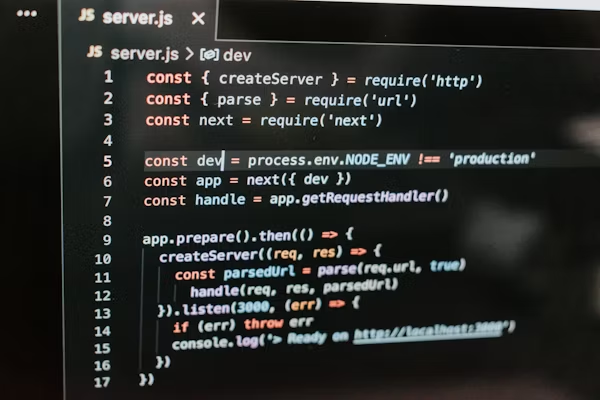Forms are at the heart of every web application. Whether it’s a registration page, login form, survey, or feedback section, forms act as the bridge between users and digital platforms. However, building and maintaining forms manually can be time-consuming and repetitive. This is where Formly comes into the picture.
Formly is a powerful open-source library designed for Angular applications that allows developers to build forms dynamically with much less effort. Instead of coding each form field one by one, developers can define form structures through configurations. This makes the entire process quicker, cleaner, and easier to maintain.
The real magic of Formly lies in its ability to reduce boilerplate code while still providing flexibility and customizations for complex use cases. Let’s dive deeper into what makes Formly such a valuable tool in modern web development.
What is Formly?
Formly is a dynamic form generator built for Angular. Unlike traditional form-building methods where each input field needs to be written manually in HTML, Formly uses JSON-based configurations to create forms automatically.
In simple terms, you describe the form fields in a configuration object, and Formly takes care of rendering them. This approach not only saves development time but also makes forms easier to manage when requirements change.
For example, if a company wants to add an extra field to a registration form, a developer doesn’t need to rewrite large portions of the code. Instead, they just adjust the configuration, and Formly updates the form instantly.
Why Developers Use Formly
The popularity of Formly among Angular developers is due to its efficiency and flexibility. Forms are often one of the most complicated parts of a project because they require validation, error handling, and dynamic adjustments. Formly simplifies this process with several key advantages.
First, it supports rapid development by letting developers focus on logic rather than repetitive HTML. Second, it provides built-in validation rules, which reduce errors and improve user experience. Third, Formly integrates seamlessly with Angular’s reactive forms, making it a natural fit for applications built in that framework.
How Formly Works
At its core, Formly works on a configuration-driven approach. Developers define their form fields as objects within a configuration array. Each object specifies the type of field, label, validation rules, default values, and other properties.
Formly then takes these configurations and generates the complete form in real time. This separation of form logic from form presentation is what makes Formly so elegant.
For example, imagine a login form with fields for username and password. In Formly, this form could be described in a configuration file instead of being hardcoded. If the design changes later, the developer only needs to adjust the configuration without touching the template.
Features that Make Formly Stand Out
Formly isn’t just about creating forms quickly—it comes with unique features that make it even more attractive for developers.
One major feature is dynamic form rendering, where form fields can change based on user input. For example, if a user selects a particular option from a dropdown, Formly can automatically reveal additional fields that are relevant to that choice.
Another feature is custom field types, which allow developers to define reusable form components that can be used across multiple projects.
Formly also has strong support for conditional validation. This means validation rules can change dynamically depending on the user’s actions, ensuring flexibility for complex forms.
Ease of Implementation
A key reason Forml’y has gained wide adoption is its simplicity. Setting up Forml’y in an Angular project takes only a few steps. Developers install the package, import the required modules, and then start defining form configurations.
Even developers who are new to Angular find Forml’y approachable because it eliminates a lot of the repetitive coding work that typically comes with form handling.
Open-Source Nature of Formly
One of the greatest strengths of Formly is that it is open-source. This means it is freely available for developers to use, modify, and extend. The open-source community actively contributes to its growth, ensuring bugs are fixed quickly and new features are continuously added.
Because it’s open-source, Formly benefits from collective knowledge and improvements. Many developers also share their custom field types, templates, and solutions, making it easier for others to implement advanced functionalities.
Real-World Use Cases of Formly
Forml’y is not just a tool for small projects—it is widely used in enterprise-level applications. Businesses that need to manage large numbers of forms, such as healthcare systems, financial services, and e-commerce platforms, often adopt Forml’y to streamline their workflows.
For instance, in healthcare software, forms can differ based on patient type or treatment plan. Instead of building different static forms, developers can use Formly’s dynamic features to adjust forms automatically depending on the patient’s details.
Similarly, e-commerce platforms use Forml’y to handle customer surveys, product customization, and order forms without rebuilding forms from scratch each time.
Advantages of Using Formly
Forml’y offers several clear benefits that make it a top choice for Angular developers.
It saves time by removing the need to write repetitive code for every form field. It improves maintainability because changes can be made quickly by editing the configuration. It also enhances scalability, as large and complex forms can be managed with ease.
Additionally, Forml’y improves consistency across projects. Since fields can be reused and standardized, applications maintain a uniform look and behavior across different forms.
Challenges and Considerations
While Forml’y is a powerful tool, developers should also be aware of potential challenges. For smaller projects with only one or two simple forms, using Forml’y might feel like an extra layer of complexity. In such cases, manual forms may be faster.
Another consideration is that developers need to become comfortable with configuration-driven design. While it saves time in the long run, there can be a small learning curve at the beginning.
Despite these challenges, for most medium to large projects, the benefits of Forml’y outweigh the downsides.
The Future of Formly
As Angular continues to evolve, Forml’y is also growing in features and performance. Its strong community ensures that it adapts to modern web development standards. With the rise of applications that demand highly dynamic and user-friendly forms, Formly’s role is expected to become even more important.
Looking ahead, we can expect more advanced field types, stronger integrations with third-party libraries, and enhancements that make form-building even smoother.
Conclusion
Forml’y has transformed the way developers build and manage forms in Angular applications. By focusing on configuration rather than repetitive coding, it provides an efficient, scalable, and flexible solution for dynamic form creation.
Its open-source nature, ease of use, and wide set of features make it suitable for projects ranging from small startups to large enterprises. While it may not be necessary for the simplest forms, its real power shines in applications where forms are central and constantly evolving.
As businesses and developers look for smarter ways to handle user input, Forml’y stands out as a tool that makes form development easier, faster, and more reliable.
FAQs
Q1: What is Formly used for?
Formly is used to create dynamic and customizable forms in Angular applications.
Q2: Is Formly only for Angular?
Yes, Formly is specifically built to work with Angular and integrates with its reactive forms.
Q3: Is Formly free to use?
Yes, it is an open-source library that is completely free to use.
Q4: Can I create custom fields in Formly?
Yes, developers can define their own reusable custom field types.
Q5: Does Formly support form validation?
Yes, Formly has built-in validation and supports conditional validation as well.
Q6: Is Formly good for large projects?
Yes, it is especially useful for large-scale projects where multiple dynamic forms are needed.











